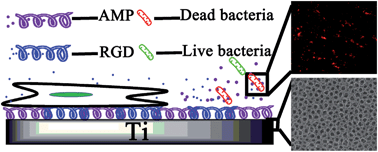Local co-delivery and release of antimicrobial peptide and RGD using porous TiO2†
Abstract
We demonstrated for the first time the use of two kinds of porous TiO2 films to co-deliver peptide HHC36 (KRWWKWWRR) and RGD. The film co-delivering these two peptides exhibited excellent antimicrobial activity against S. aureus and E. coli and low cytotoxicity to rat bone mesenchymal stem cells (rBMSCs).


 Please wait while we load your content...
Please wait while we load your content...